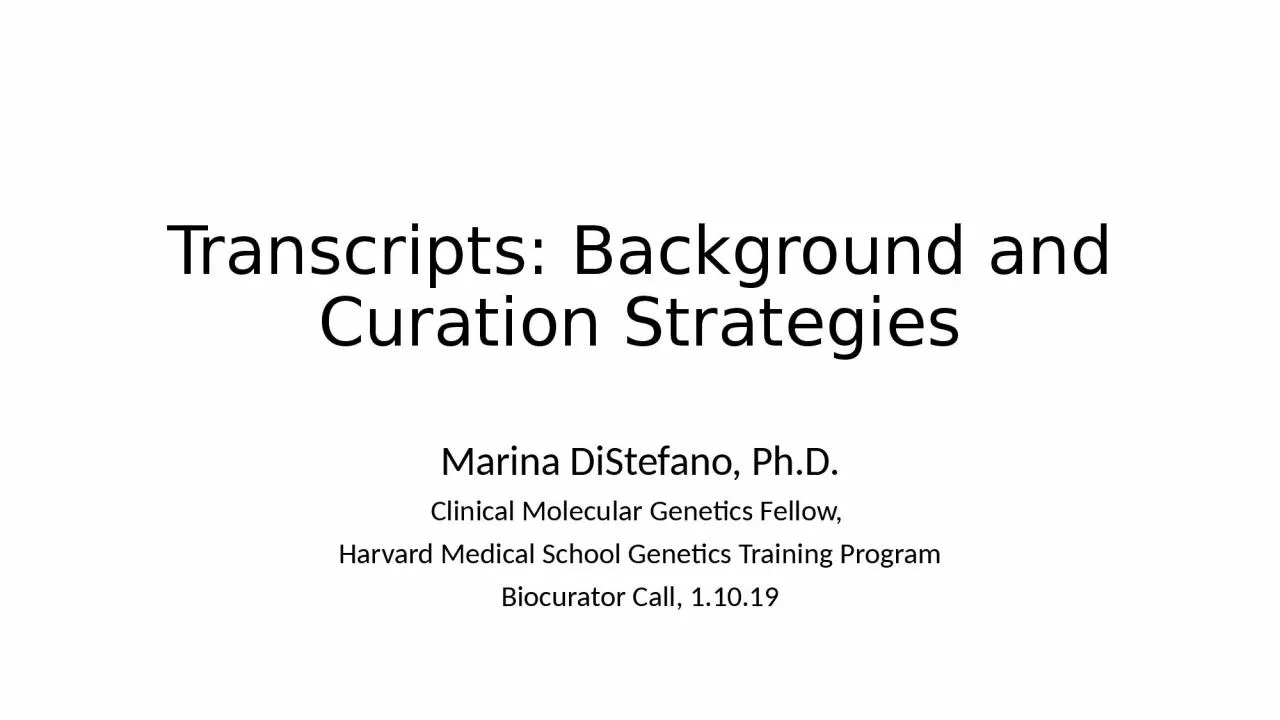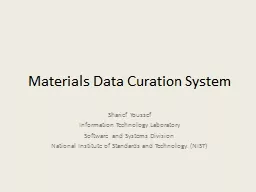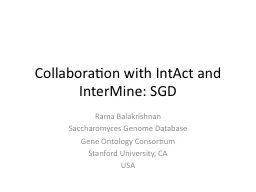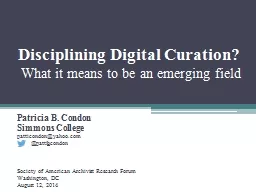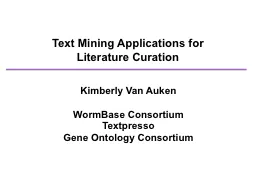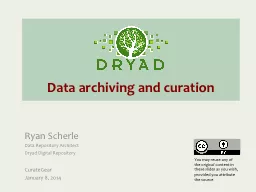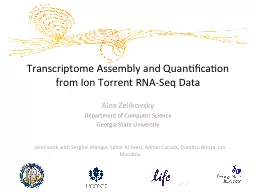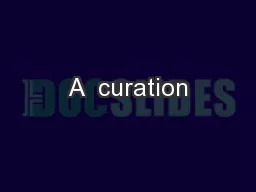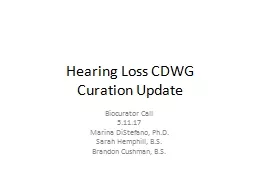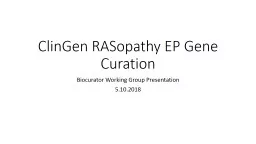PPT-Transcripts: Background and Curation Strategies
Author : ethlyn | Published Date : 2022-06-14
Marina DiStefano PhD Clinical Molecular Genetics Fellow Harvard Medical School Genetics Training Program Biocurator Call 11019 Outline Why does transcript curation
Presentation Embed Code
Download Presentation
Download Presentation The PPT/PDF document "Transcripts: Background and Curation Str..." is the property of its rightful owner. Permission is granted to download and print the materials on this website for personal, non-commercial use only, and to display it on your personal computer provided you do not modify the materials and that you retain all copyright notices contained in the materials. By downloading content from our website, you accept the terms of this agreement.
Transcripts: Background and Curation Strategies: Transcript
Download Rules Of Document
"Transcripts: Background and Curation Strategies"The content belongs to its owner. You may download and print it for personal use, without modification, and keep all copyright notices. By downloading, you agree to these terms.
Related Documents

